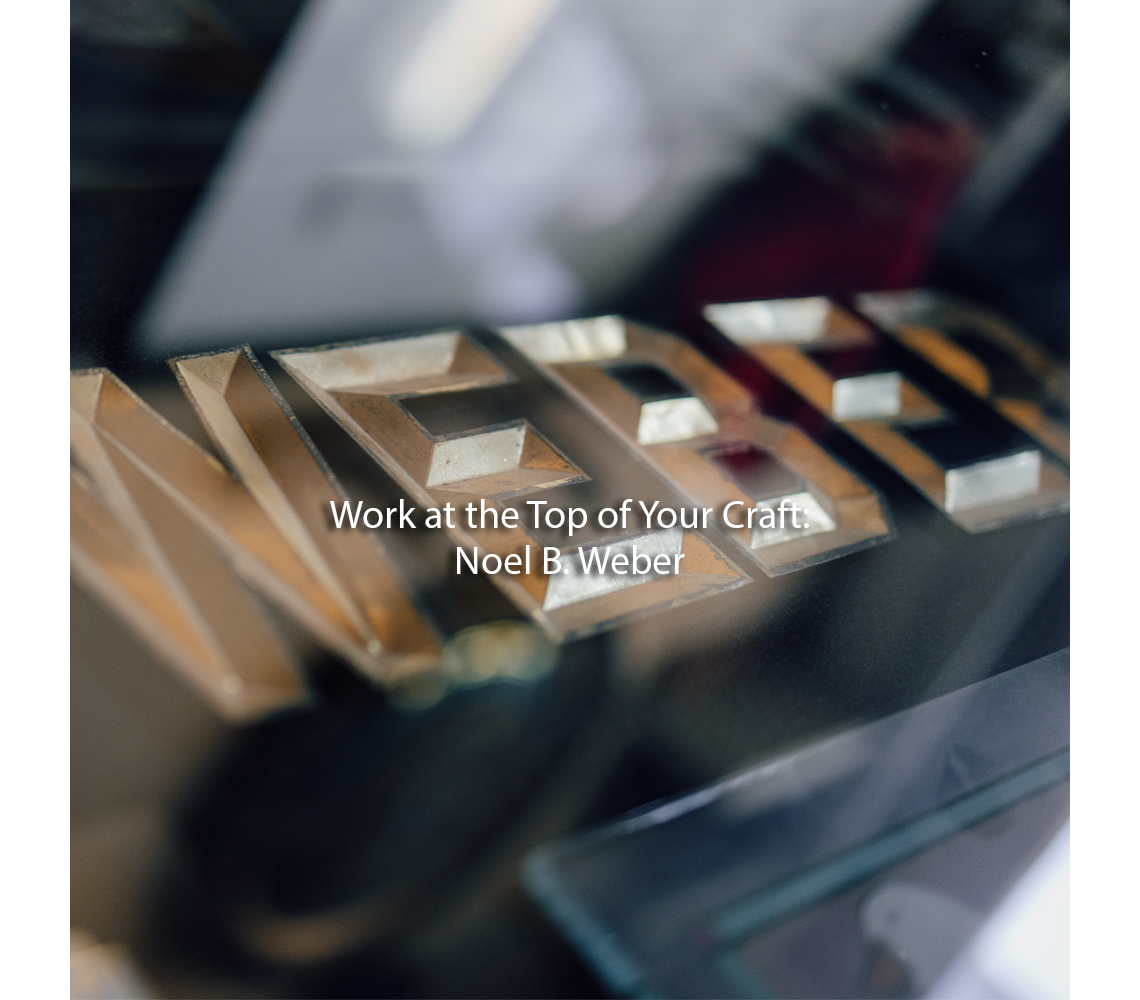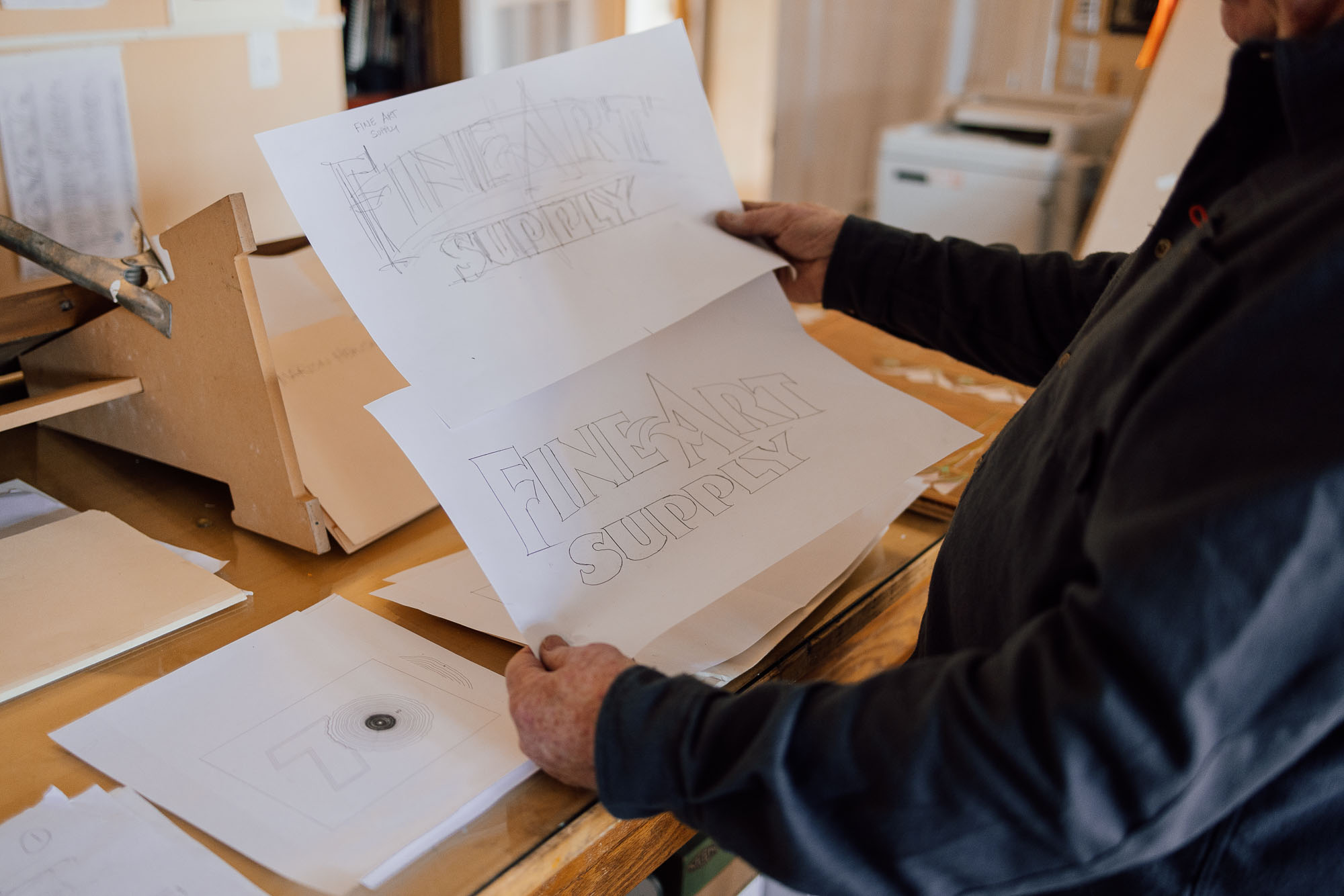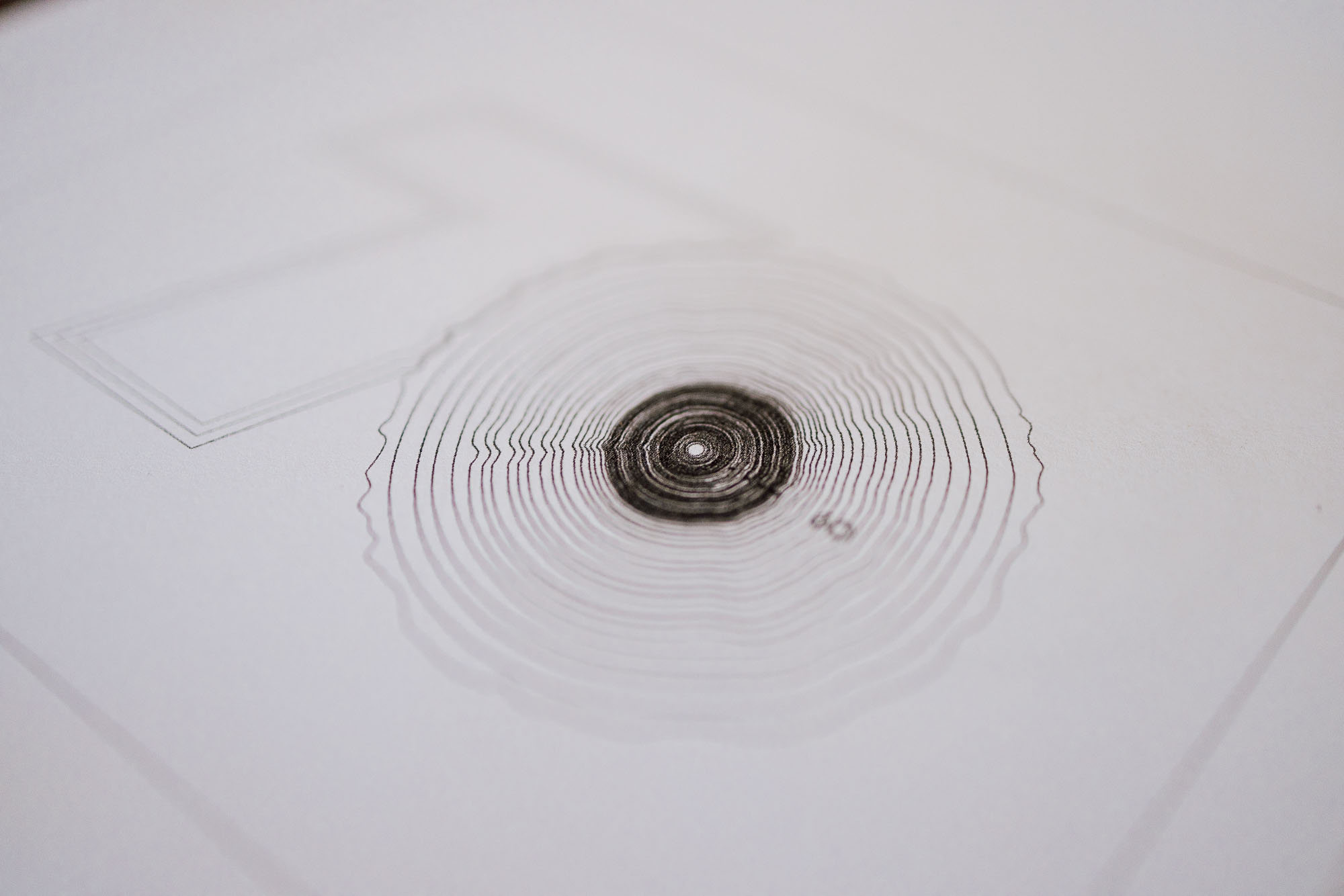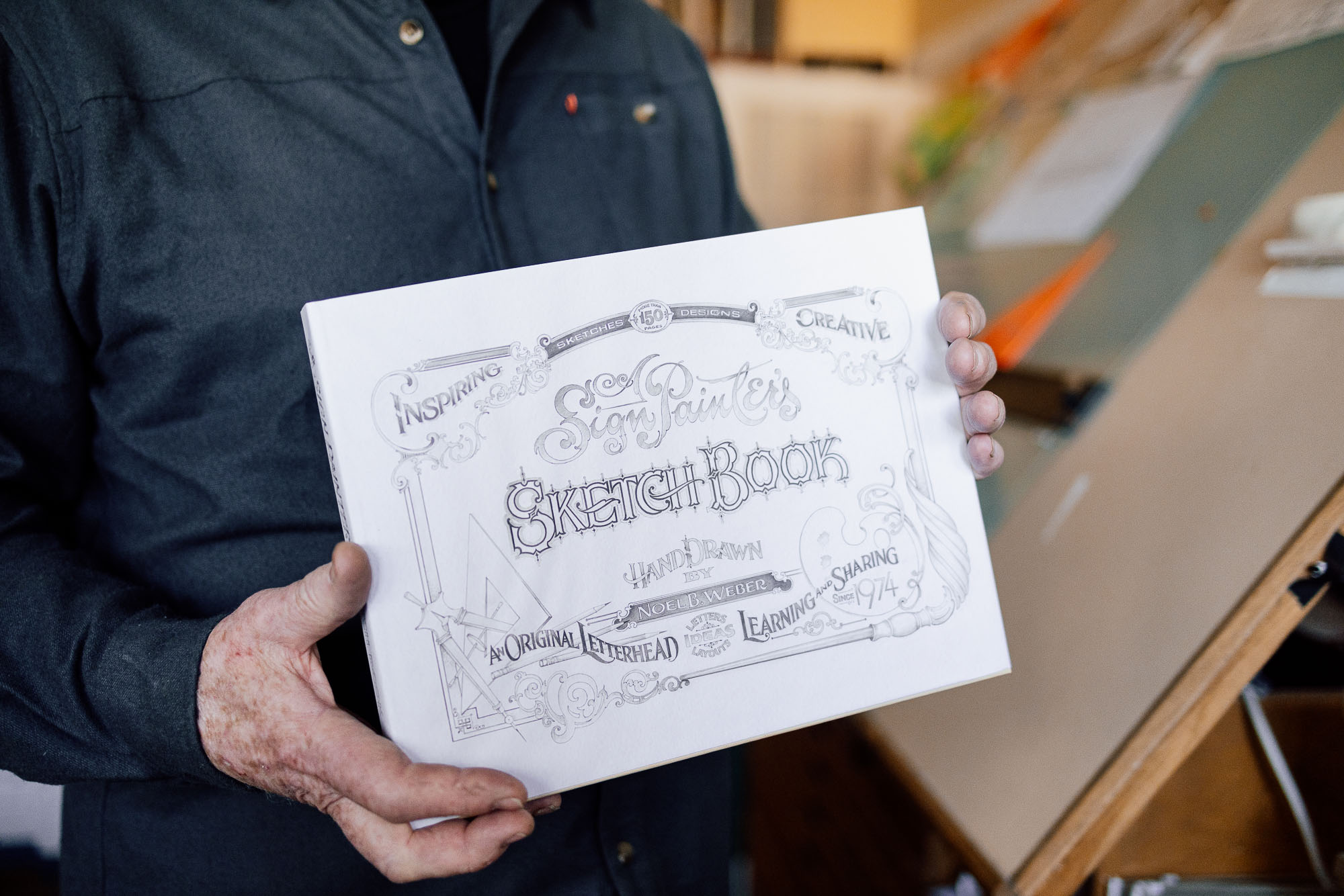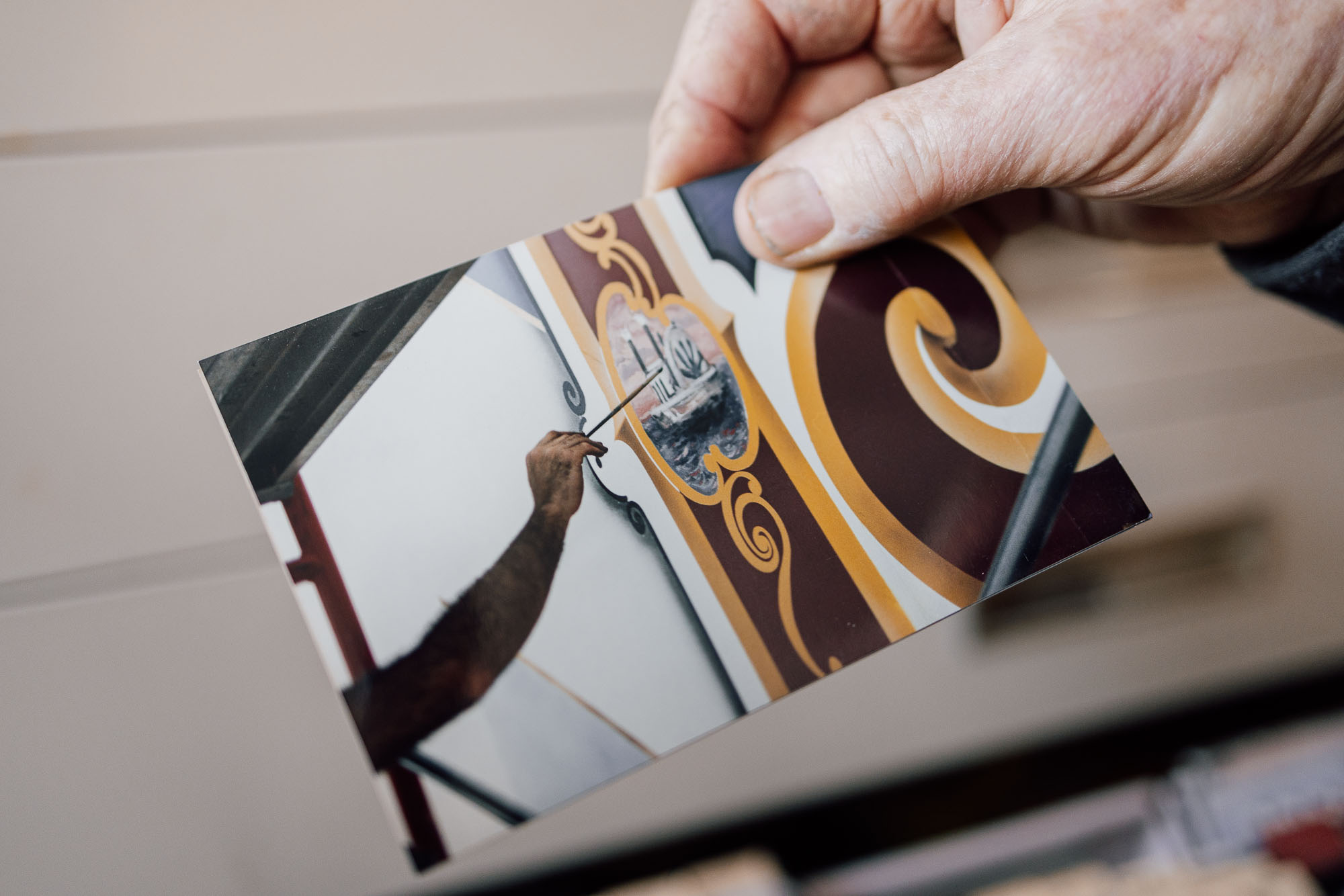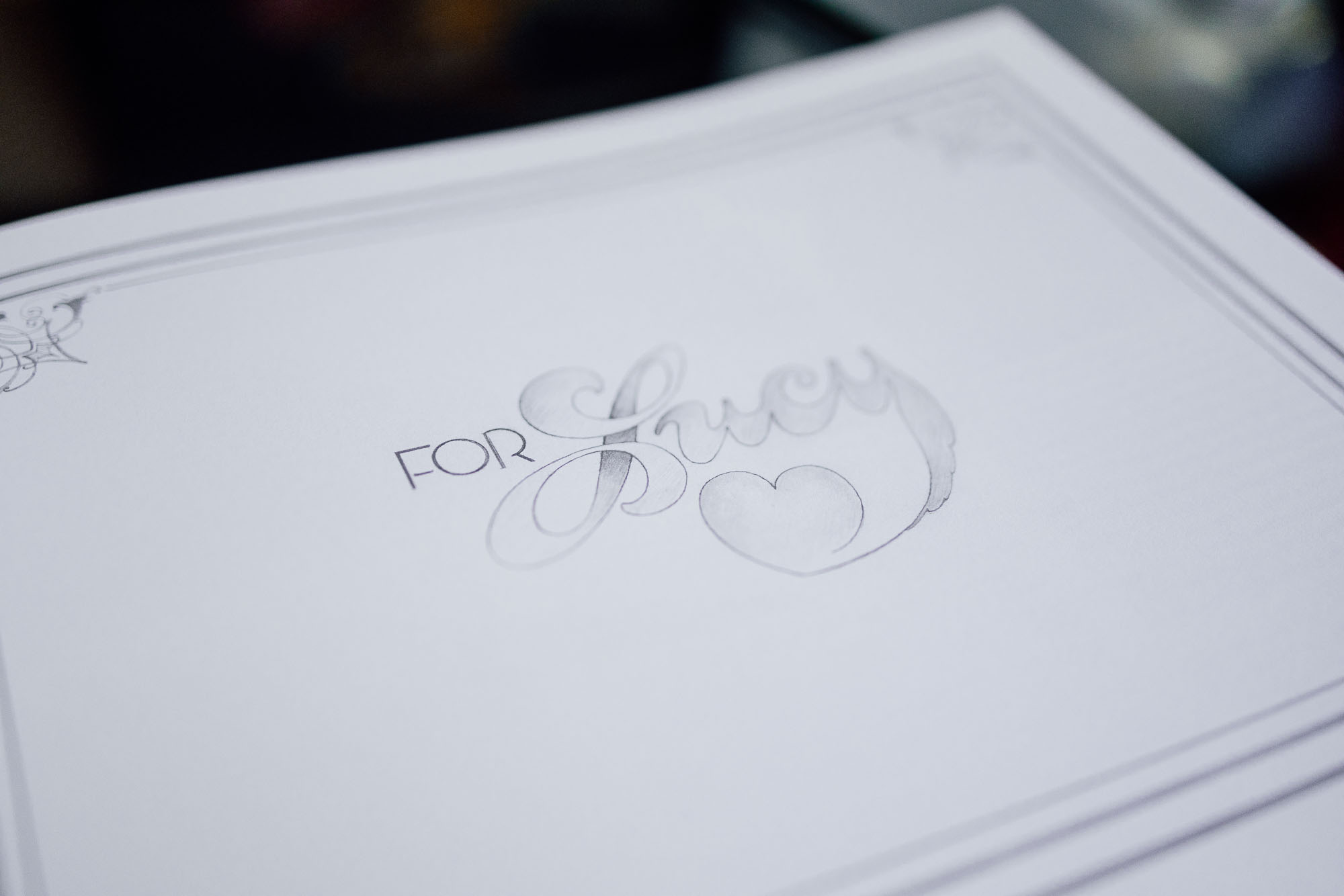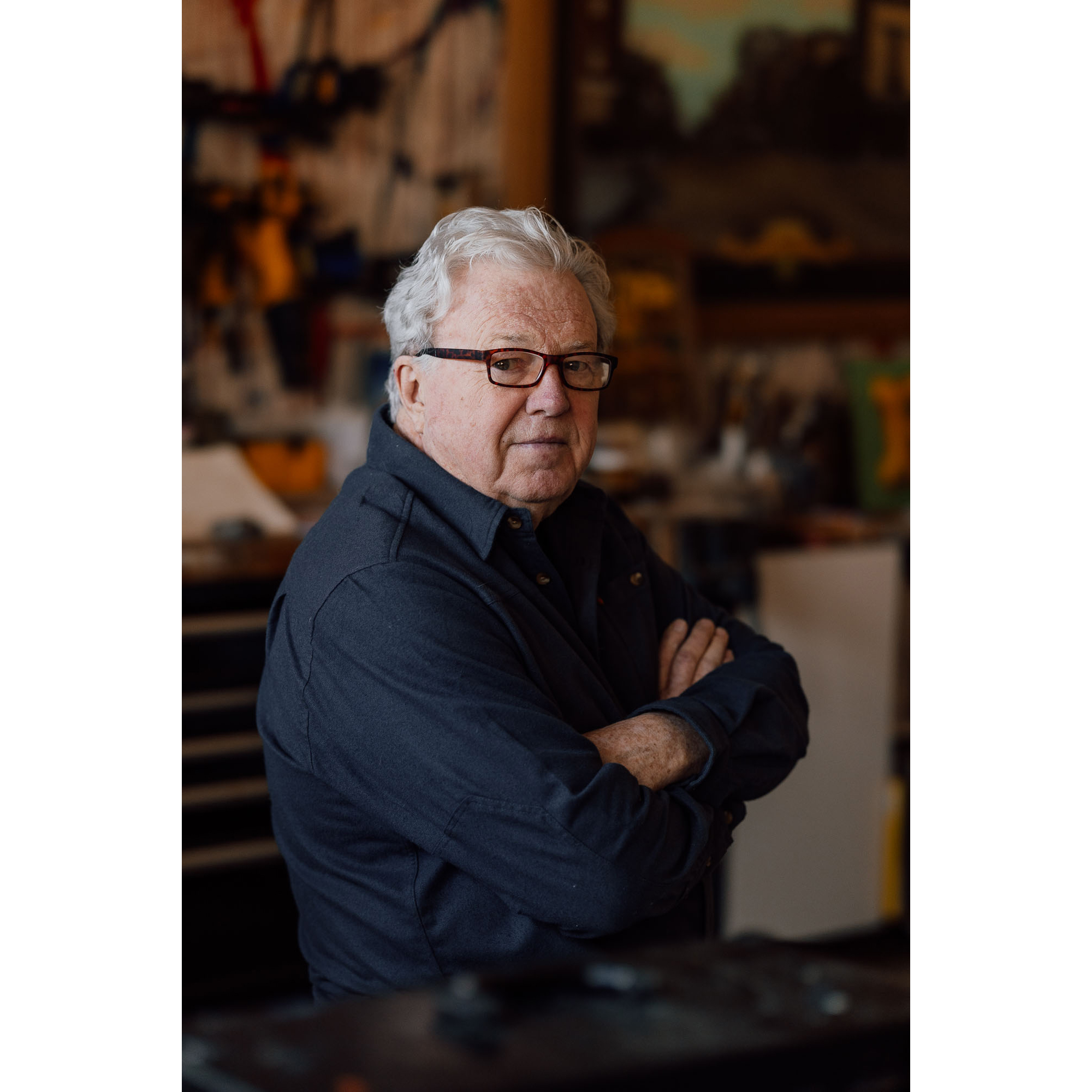Creators, Makers, & Doers: Noel B. Weber
Posted on 8/2/23 by Brooke Burton
Interview & Photography by Brooke Burton © Boise City Department of Arts & History
Noel B. Weber, founder of the longtime creative cornerstone Classic Design Studio on Myrtle Street, started in the sign painting business over 45 years ago, and, we’re just going to say it, he is a master of his craft. His custom sign work has consistently enhanced the landscape of downtown businesses in Boise and beyond (ask him about his work with Disney!). Noel has completed large-scale murals for the City of Boise while the studio’s fabrication and design services have contributed to multiple public art projects (check out Noel Weber Jr.’s interview here.) In 2007, Noel and his wife/business partner Lucy were recipients of a Mayor’s award in the arts for Business Integration of the Arts. We are honored to hear Noel describe his favorite projects and the unexpected silver lining that came out of the 2008 recession. For Noel, it’s all about the joy of having raised a family in the arts and the pleasure found in watching others work at the top of their craft. And tenacity, lots of tenacity.
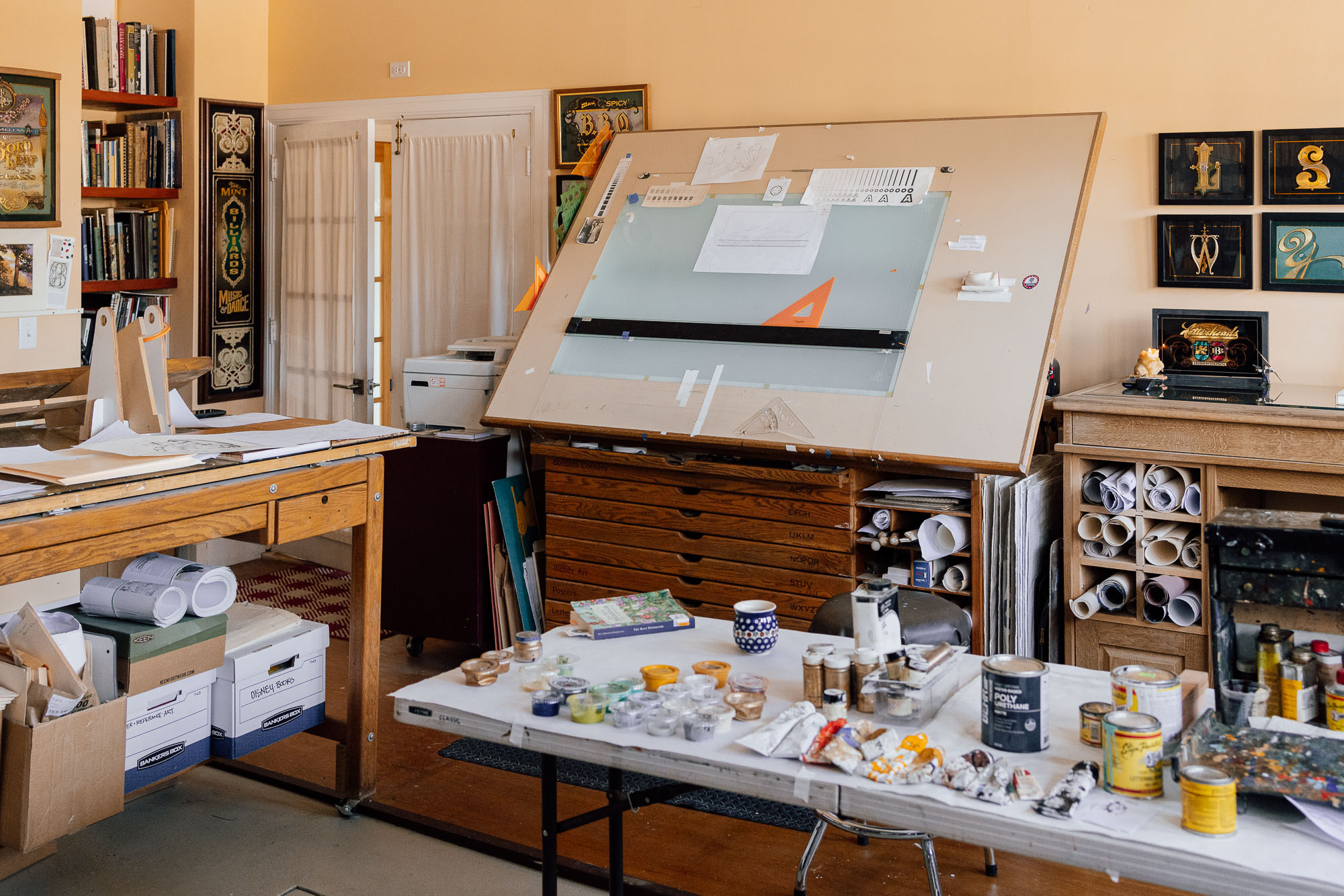
What does it mean to you to be an artist?
What it’s meant to me over the years is being independent. Also, feeling like I have purpose and being able to raise a family working as an artist. I’m a commercial artist, so if I’m doing [a job] I know there’s a predetermined price on it and a paycheck at the end. There’s a level of comfort with that. But the most important thing is probably that independence and purpose.
What kind of independence?
If somebody is coming to me, they know the type of work I do, so that already gives me freedom of design, so I can design the way I want, and then hopefully meet the client’s expectations as well.
Has your aesthetic and preference changed over the years?
[Chuckling.] I’m pretty much locked into a time zone. If you were to ask me early in my career what period I liked, I would have said Art Nouveau. And then if you asked me what was modern to me, I would say Art Deco. I never went into the ’50s, the ’60s, the ’70s. I was locked into a vintage style, and that’s the style I went with, and that’s the style I enjoy. 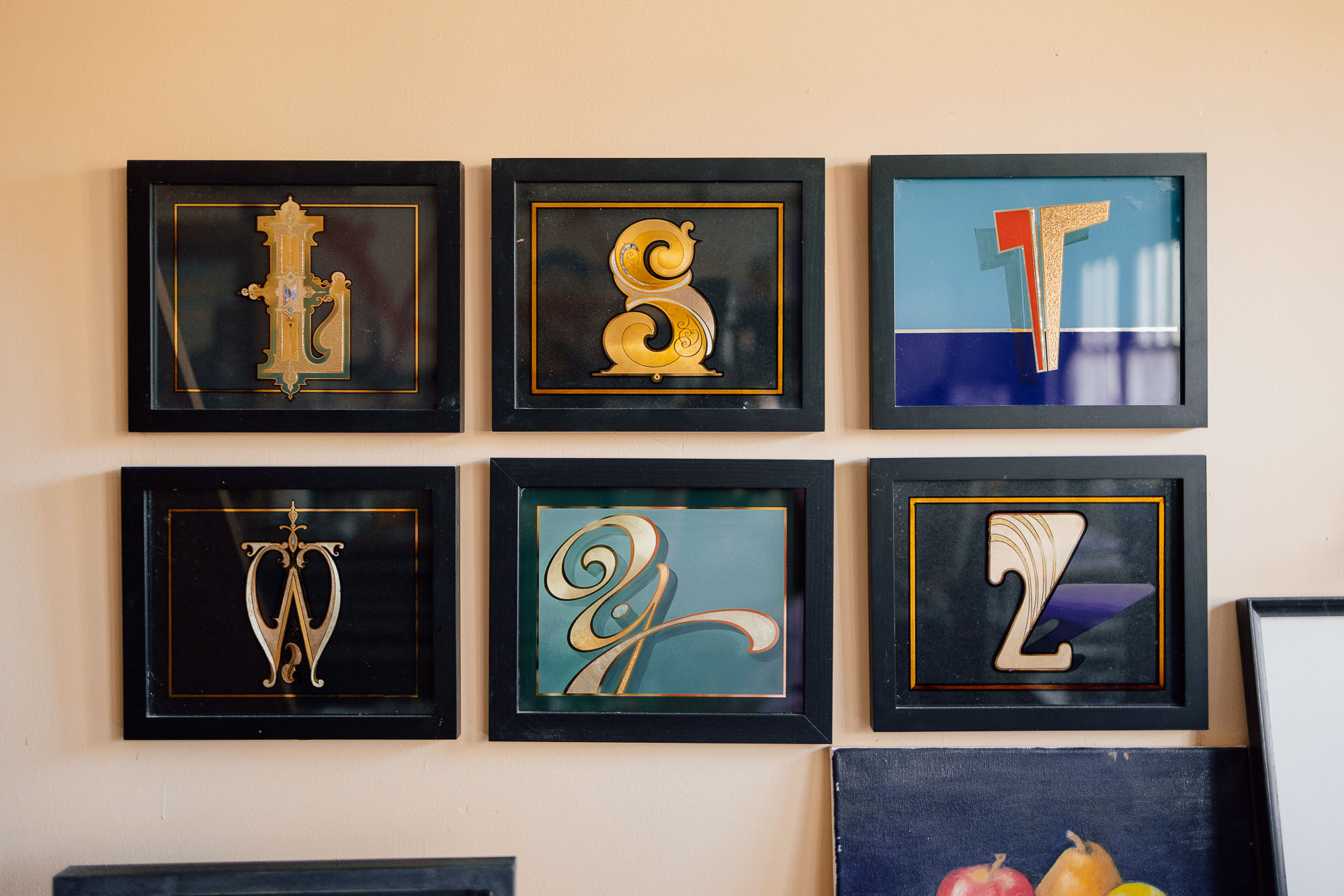
I bet you notice and capture nuances that somebody with an untrained eye, like me, wouldn’t see.
Yes. I like that period because, to me, there was more art put into the end product, especially in signage. I also enjoy painting a 3‑foot Helvetica letter, too.
We talked earlier about how you started out painting billboards.
The thing I’ll always be grateful for in painting billboards is that it gave me freedom of scale; I’ve never been afraid to work really large or, you know, work on a thumbtack. Also, it eliminated my fear of heights. [Laughter.] You had to learn to be efficient, no lost motion, because if you forgot something, if you forgot a brush, a piece of charcoal, a yardstick—as an apprentice, which is what I was—I’d have to climb down the ladder to fetch those things. You learned efficiency, no lost motion, and how to get things done fast.
What’s the difference in movement working the size of a thumbtack versus the size of a billboard?
Working on a billboard, you’re using your whole body. If you’re working really small, you’re focused, you’re using smaller tools, and it’s more tedious. But either scale is still fun.
It’s all in the fingers versus the whole body; working large could almost be a dance.
A good description. And we were working on stages.
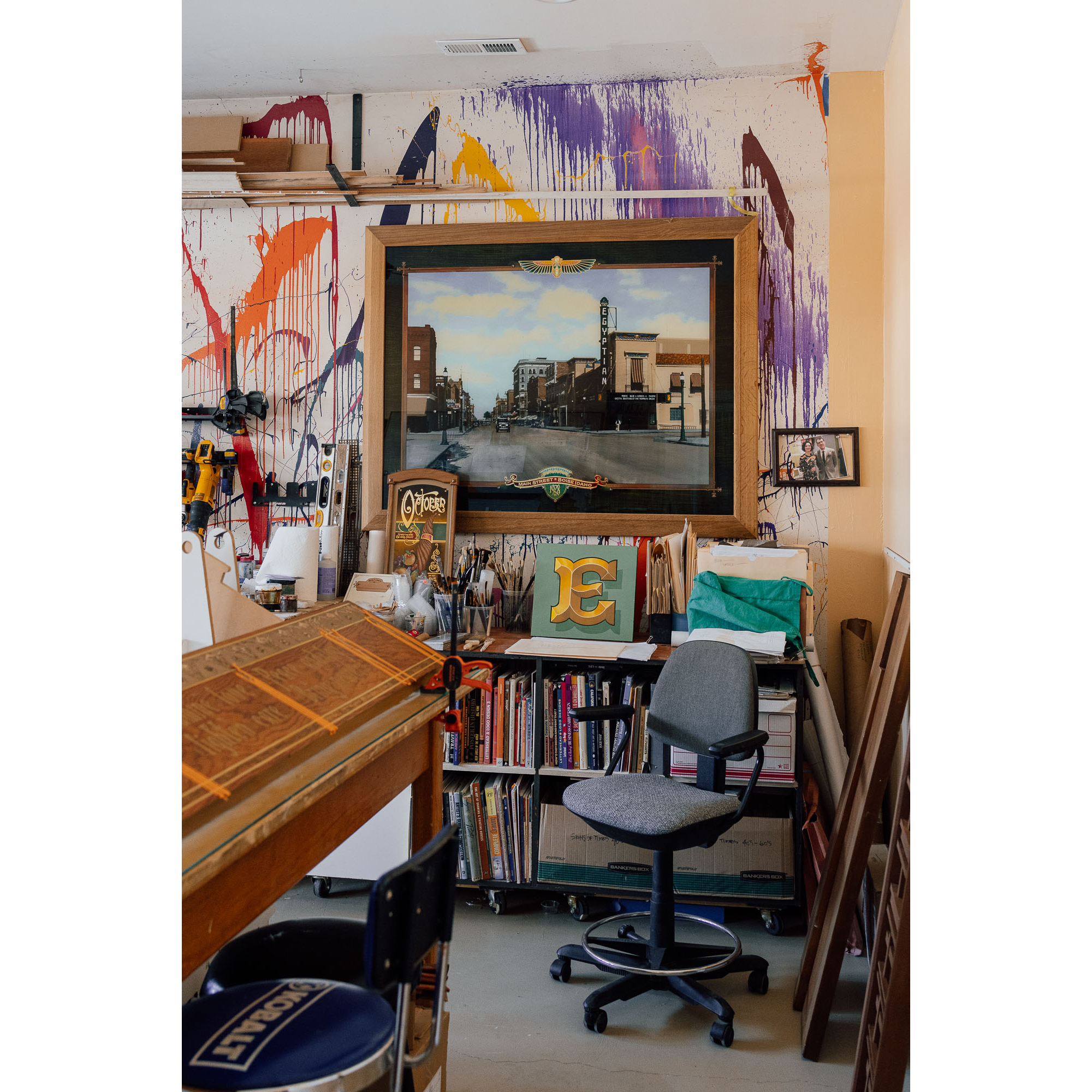
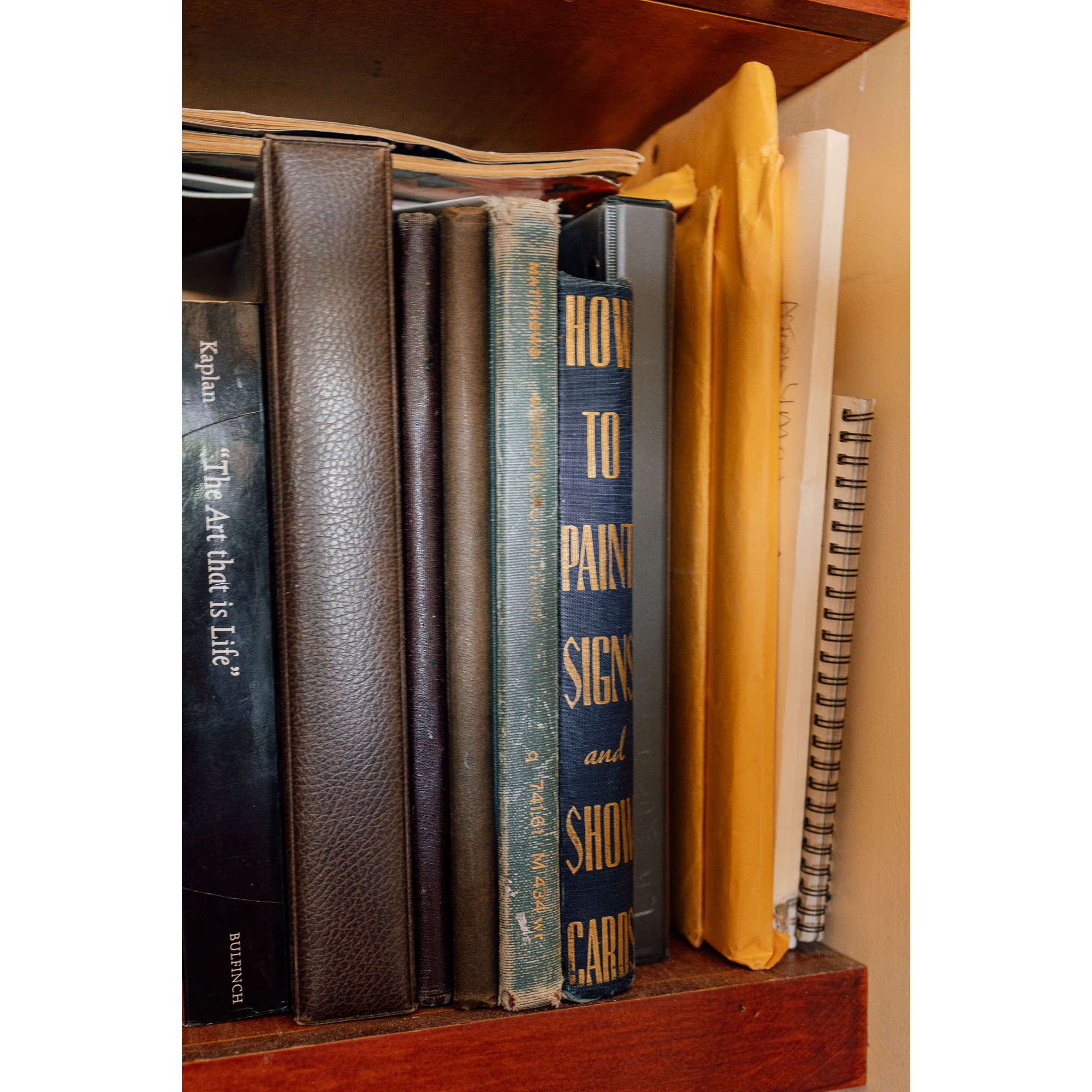
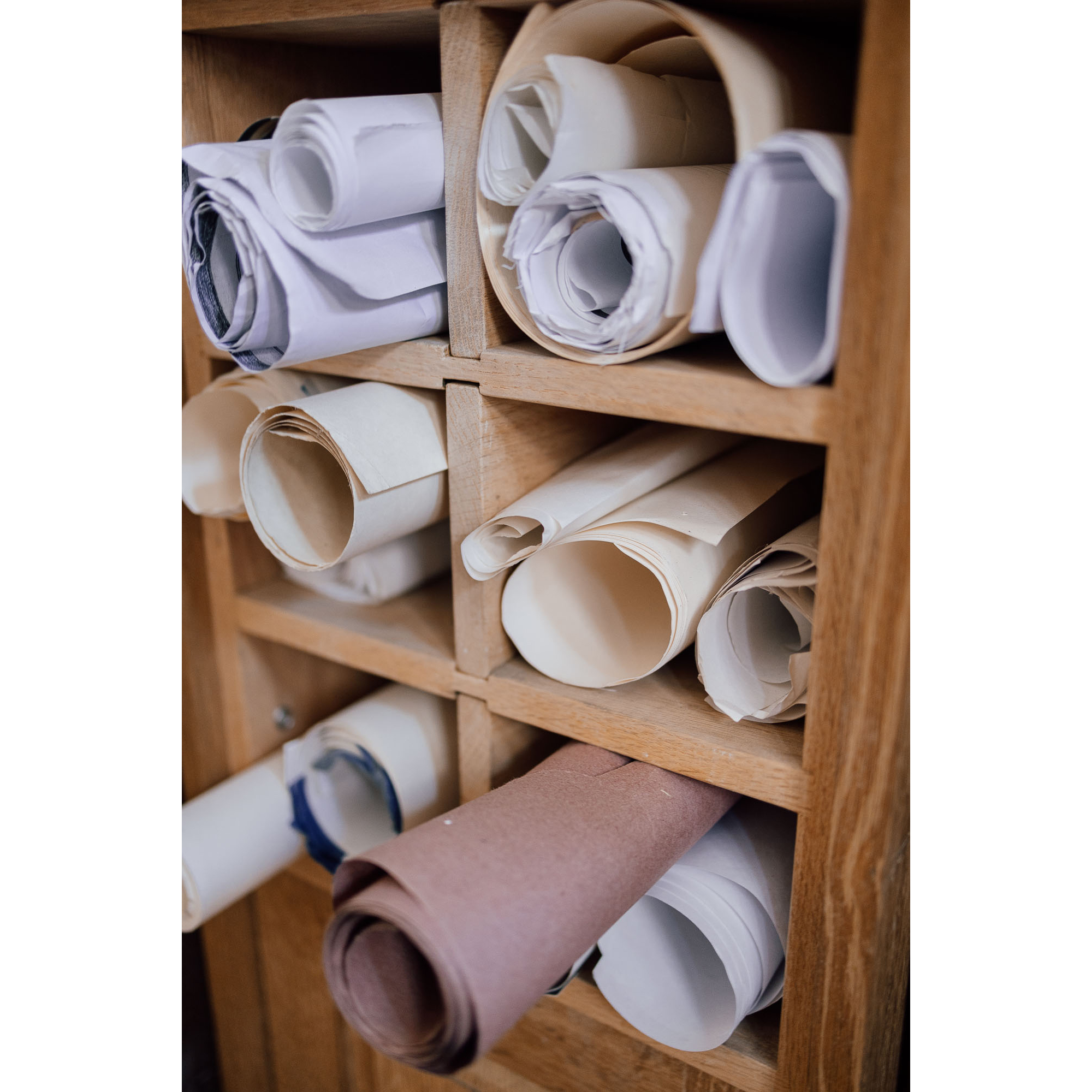
Did you get heckled up there?
No. But, once we were painting a billboard out in a remote farm area and there were a couple of guys out pheasant hunting, and the back of the billboard got shot by a shotgun.
Scary!
That’s not a heckle, that’s a danger zone.
You showed me the black box in the studio, what’s the story?
My first day of work—
Out of the design school?
Yes, I went to art school in Chicago, the Institute of Lettering & Design. All I learned for two and a half years was how to letter, letter spacing, letter characters, composition, all the basics of a trade. After that I was introduced to a union business agent in Chicago. He saw my skill level, and he says, ‘We can start you out as a third‑year apprentice,” which meant that I got a decent wage right out of school. My first day of work, I showed up with a little red box, with all the tools I thought I might need for the job, walked into the shop, and a journeyman sign‑maker looked at me and said, “Are you going fishing, kid?” [Laughter.] So with my first paycheck I bought a sign kit. It was 19 dollars and I’ve had it for the last 40, 50 years. 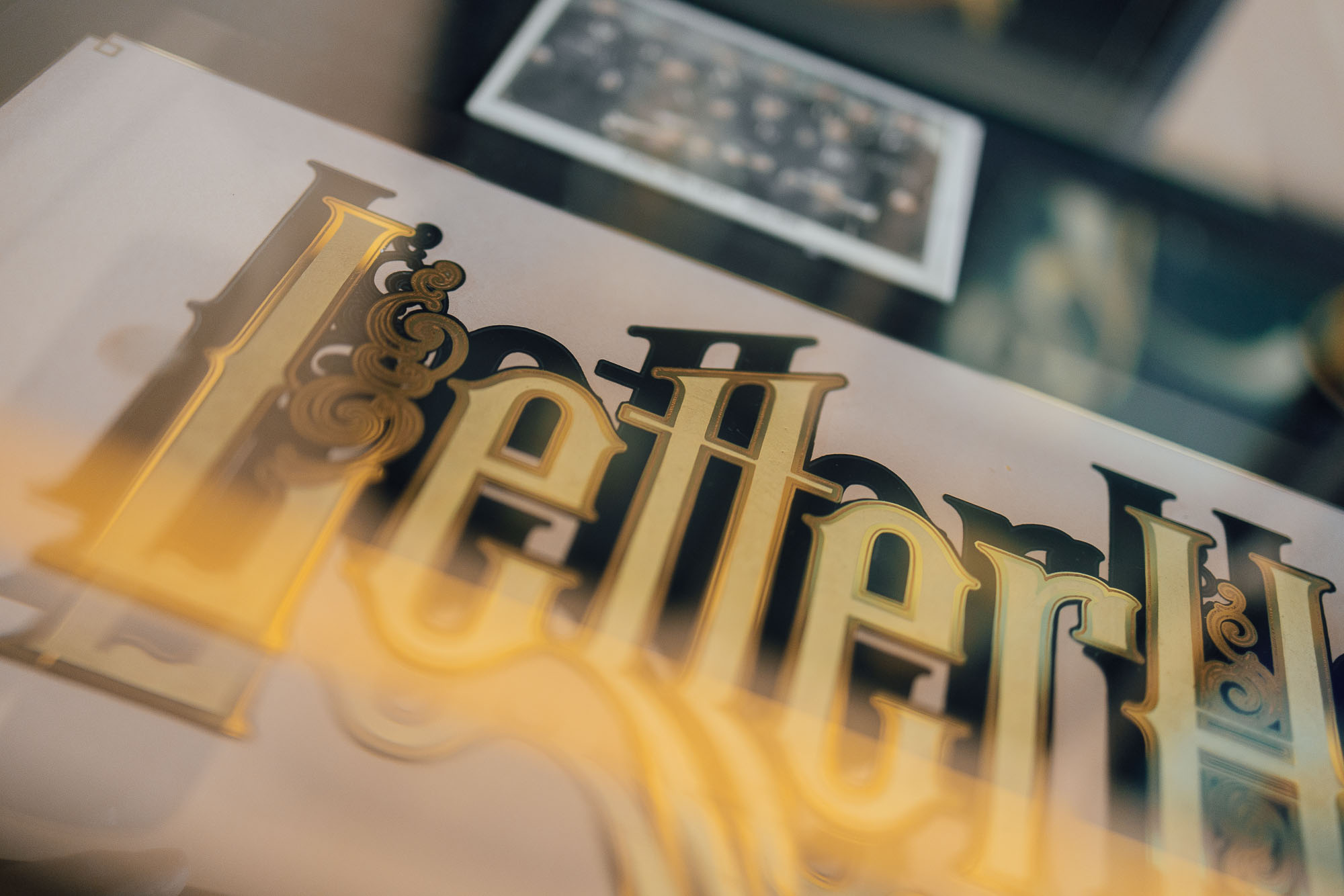
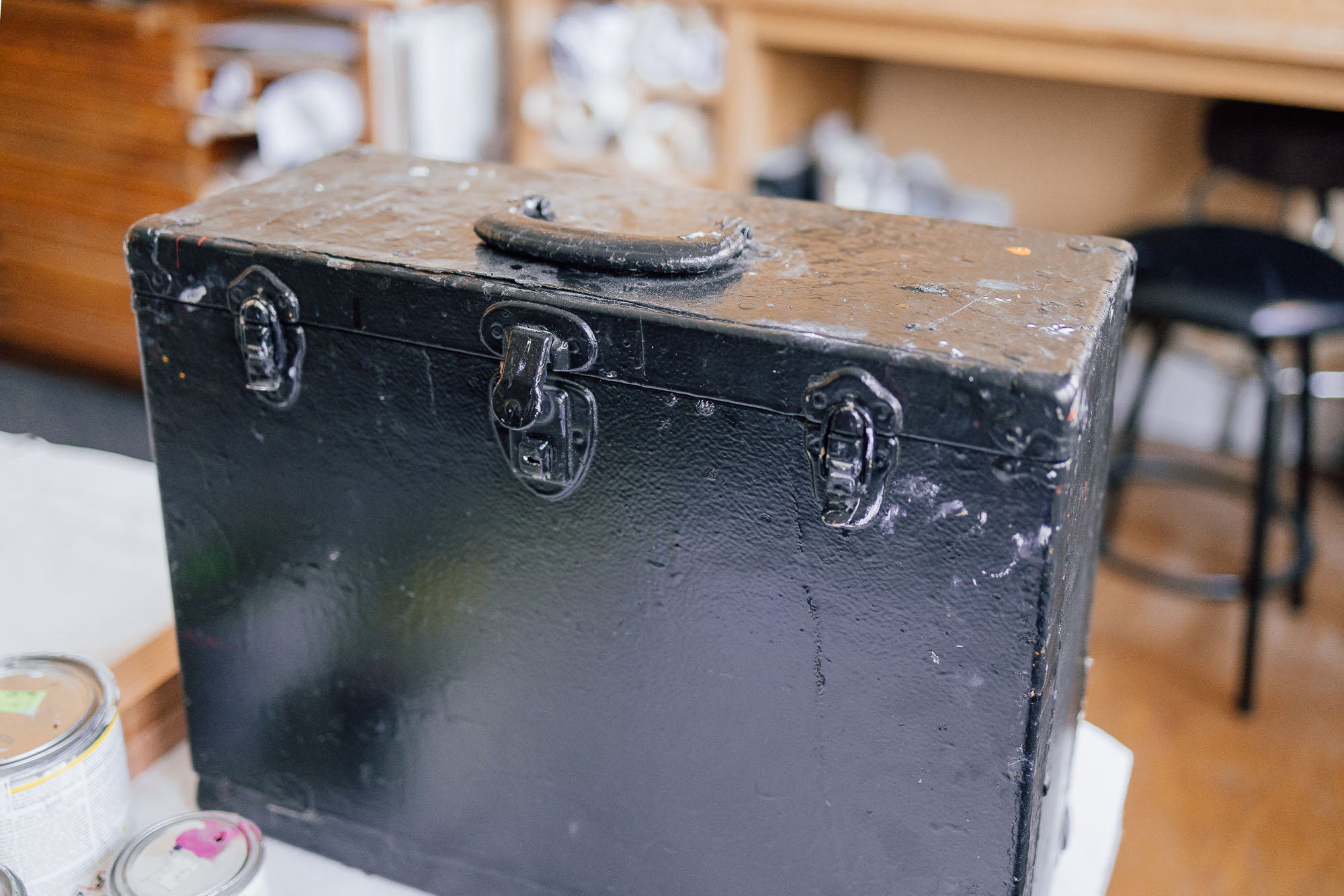
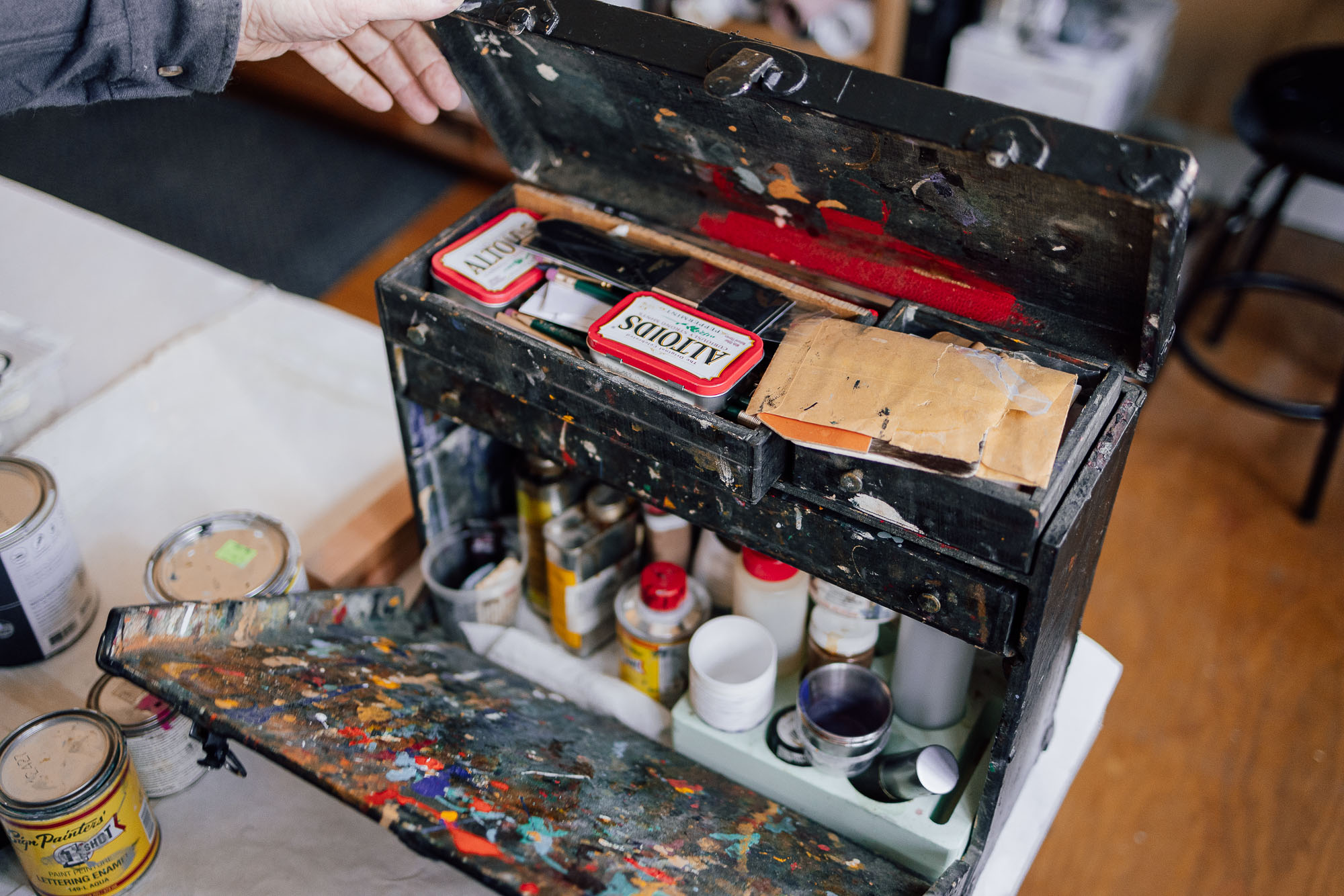 It’s well loved. Tell me about your book.
It’s well loved. Tell me about your book.
Five or six years ago, we did a retrospective of my work down at MING Studios. I had a bunch of pencil sketches on one wall, and my youngest daughter had given me a book that year for Christmas, a Frank Lloyd Wright book, of all his pencil sketches. She wrote a little note, “Dad, your pencil sketches are really nice, you should put a book together.” That’s how it started. My wonderful son‑in‑law, Sam, put the book together. It’s an accumulation of, probably, the last ten years of sketches and designs.
It’s a comprehensive overview of your process and the community you help build in the trade. Over the years, have you seen the art community change in Boise?
One of the first public art pieces we were involved with was the Wings at the airport. There was so much controversy you know, people liked it, they didn’t like it. I liked it because I got to know the artist who produced it.
Now, you look around town, there is art everywhere. I think it’s great that more artists have a chance to express themselves and get a decent commission. Also, I know through that process, that you can’t just say you want to do the work, you have to prove you can do the work.
Right we talked about consistency and–
Discipline. Over the years we’ve had a number of really good employees and we always encourage them to work at the top of the craft. Do the best work you can. It may take a little longer, but it’s proven that if you do it right, it will be appreciated. I’m really happy with the direction our shop is going right now. 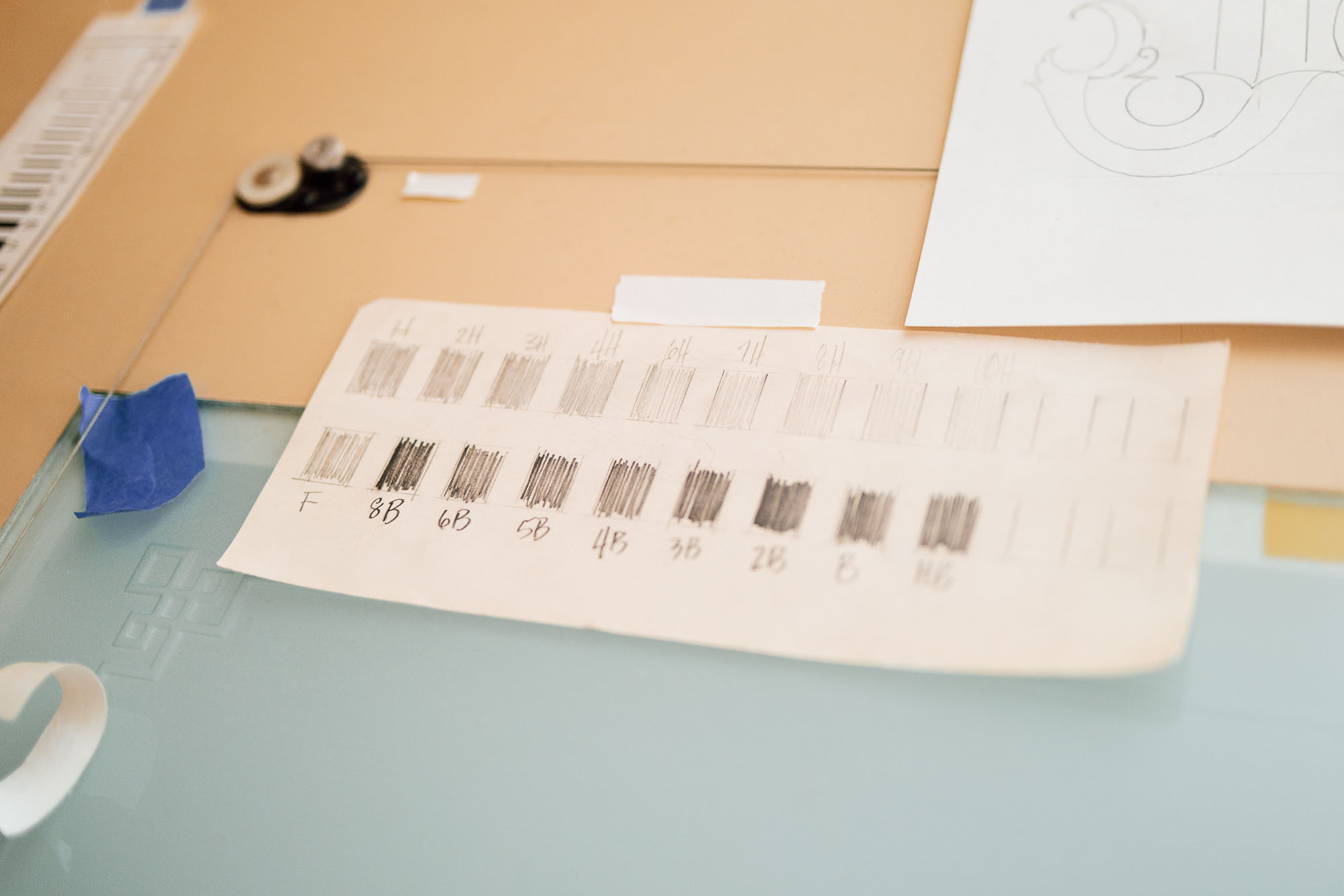
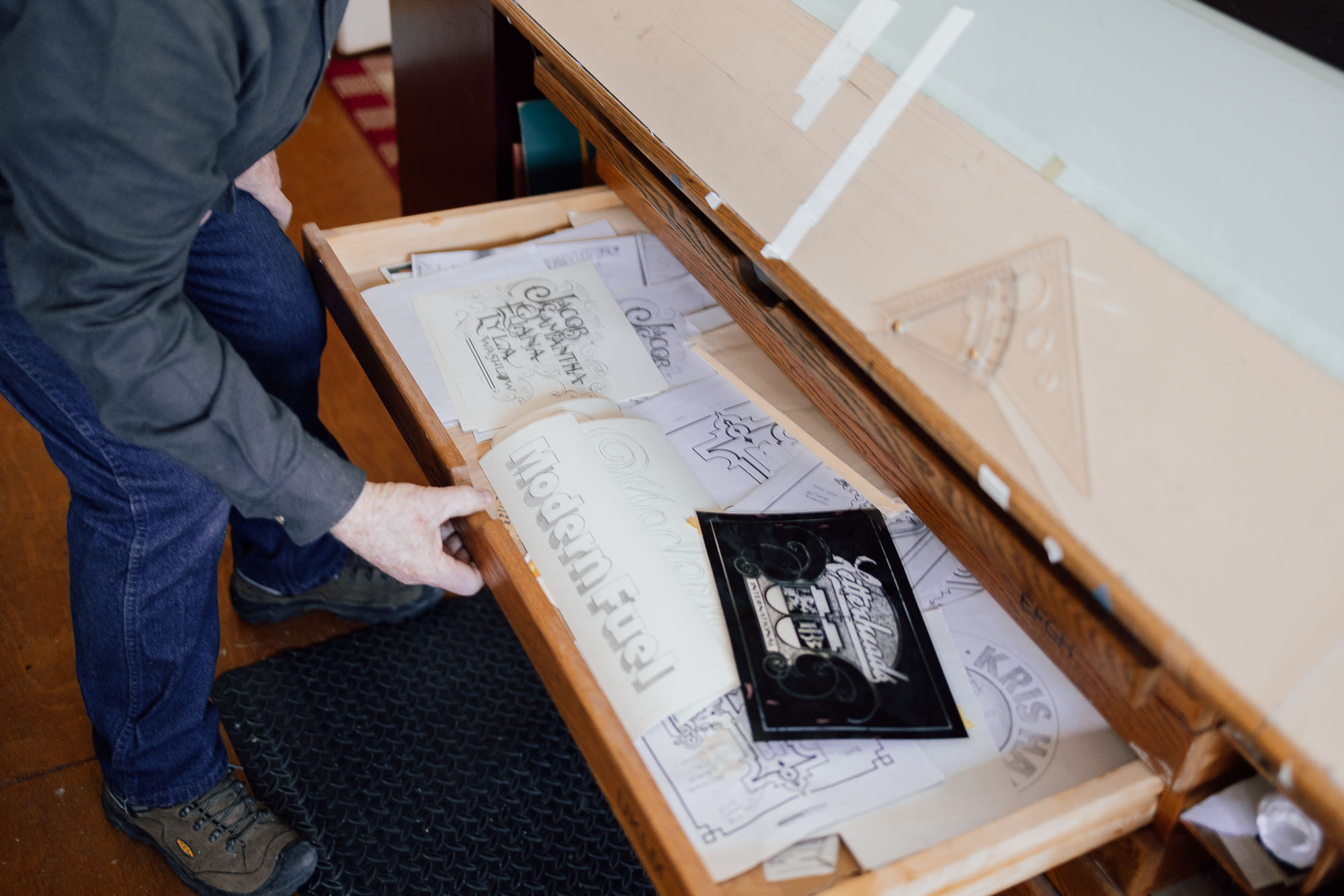
What direction is it going?
In 2007–2008, we had the recession, or whatever they wanted to call it, and we downsized considerably. It really broke my heart to have to lay people off. Never thought we’d have to do that. But I would have missed seeing how my son has grown. It’s been fun to see how he’s taken things on and managed projects. Had we not downsized, we may never have seen that happen. His work is different than mine, but his skill levels far exceed mine.
Oh, wow.
But, just having that level of comfort, knowing he’s happy with what he’s doing.
Oh, the happiness of our children means the world.
It’s satisfying.
Tell me about your process.
Starting out on a design, I can usually draw it in my head. I get excited to come out here and actually put it to paper. I also know that the first draft is going to suck. The second draft might be a little better. The third draft I can really see things developing. Fourth or fifth draft – and when I say draft, I do overlays on a light table – so by the time I get to the fifth one, I’m going, this is looking pretty good. I might look at it a day or two later and can’t believe I actually drew it.
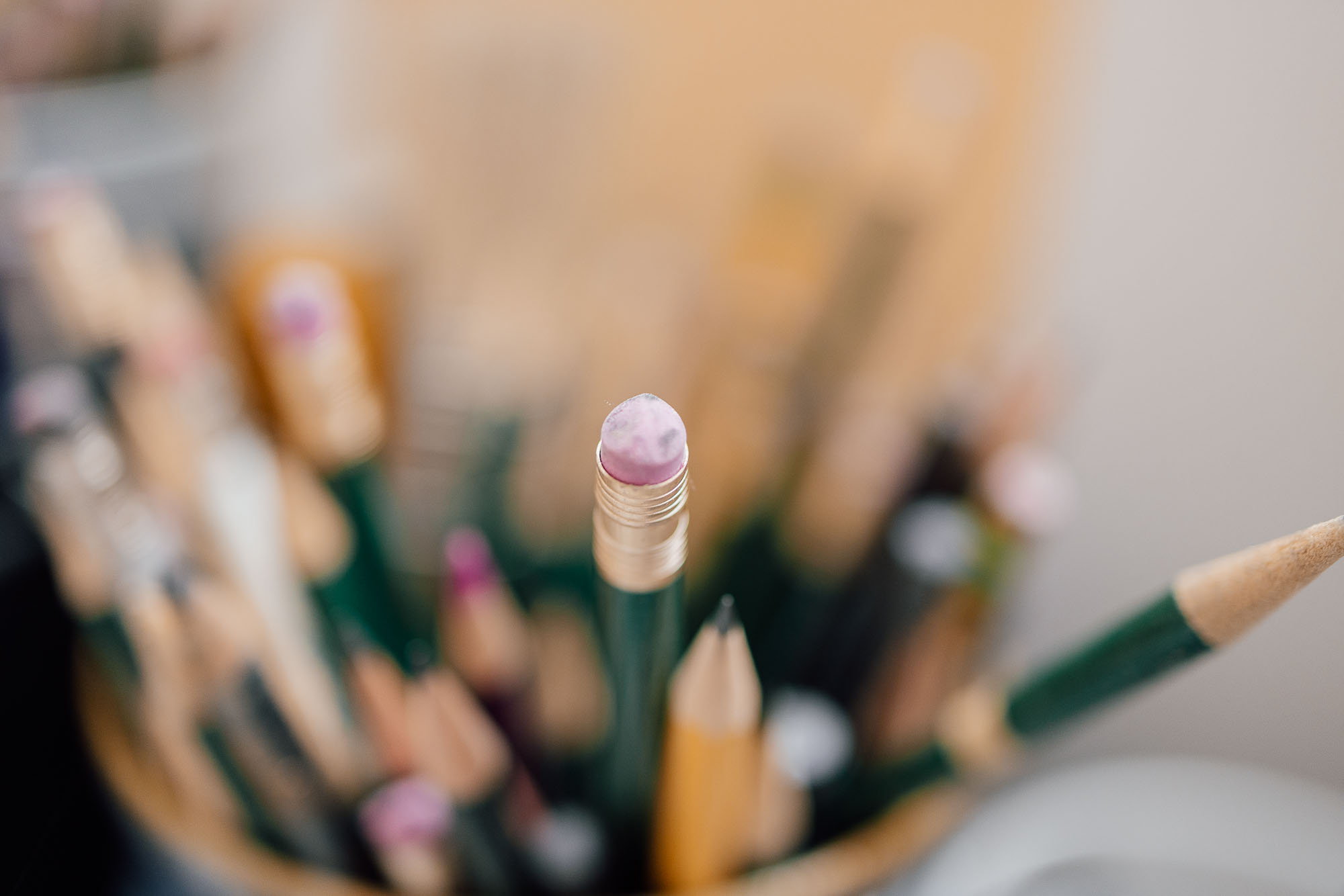
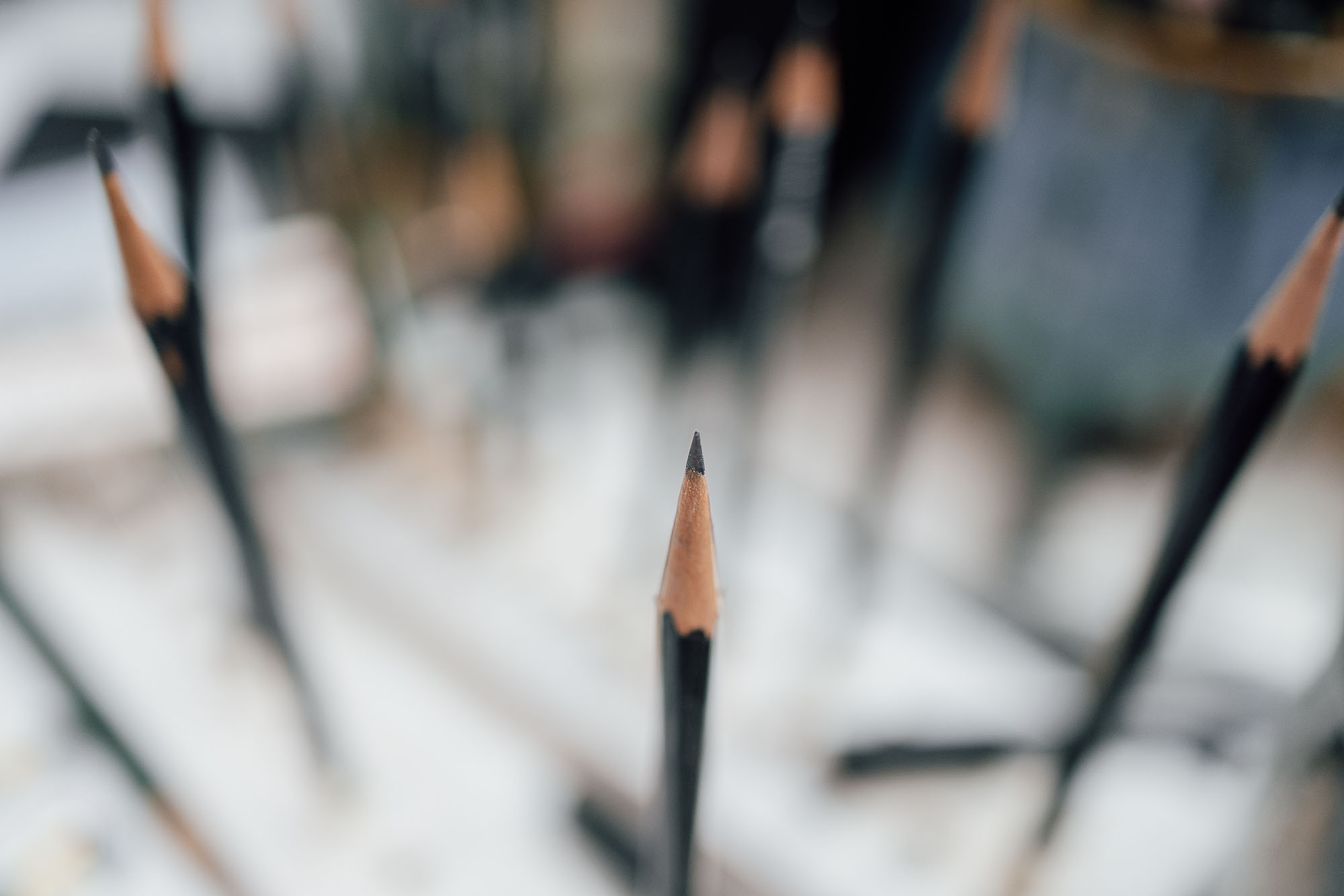 How many pencils do you think you have in there? 200? More? [laughter]
How many pencils do you think you have in there? 200? More? [laughter]
You can never have enough pencils. We would scatter them around the shop, sharpen a dozen or two at a time, keep them handy, because you’re always looking for one. We’ve always used 2Bs. This one says, “All good design starts with a pencil.”
Custom made?
Yeah, each one of these, before it’s sharpened, has at least eight really good ideas in it. I tell people when I give them one, if they don’t get eight out, bring it back, I’ll replace it. I’ve only had one person do that, but I think they just wanted more pencils.
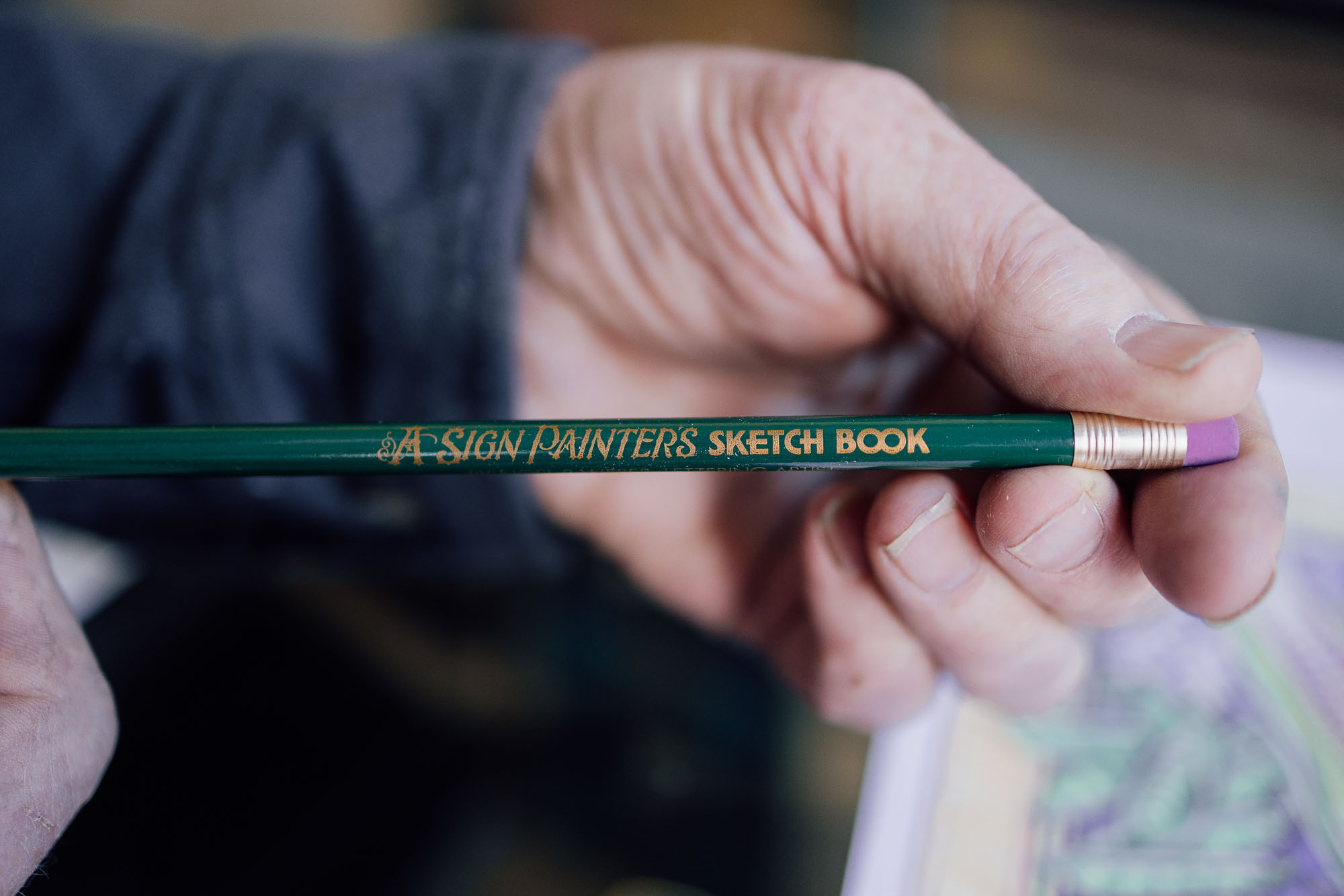
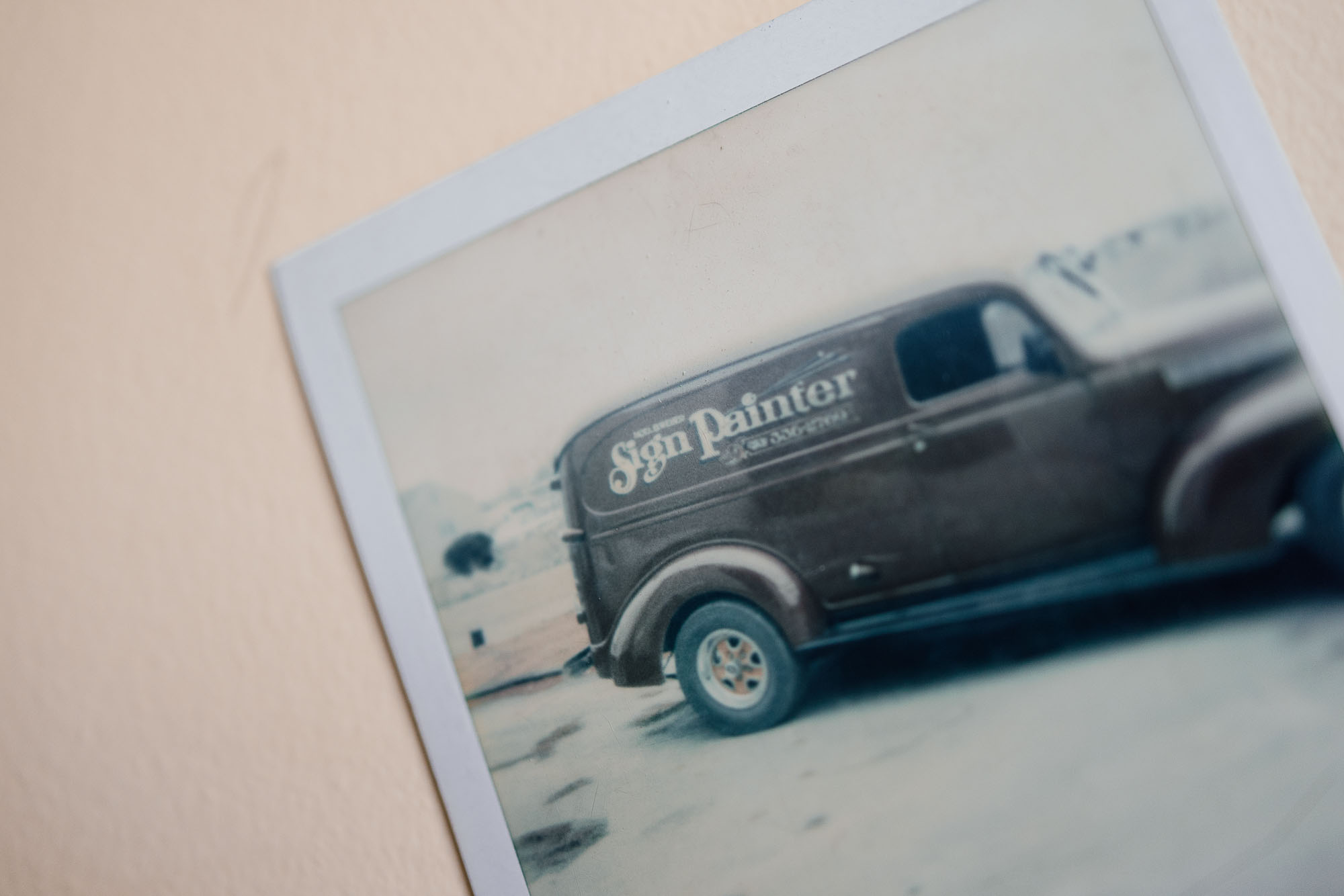 What are some favorite projects?
What are some favorite projects?
I always say the one I’m working on right now. Or, the last card I made for my wife. Most favorite projects are from the last four or five years, they’re something I designed, and then watch my son build.
The collaboration. Design and fabrication.
I think a really cool one is the Flicks sign on Myrtle; it was a pencil drawing that he took and just knew what to do, and if he didn’t know, he found out how. My father was a tool and die maker.
What is that?
A machinist. That [skill] kind of skipped me. My son has machines down there that I don’t even know how to turn on. But he can look at something and fabricate it. I’m just amazed! [snaps fingers] He’s a quick‑minded young man.
Those are my favorite projects, where we can work together. And I get out of the way. I was that way even when we had employees. I would design things and then get out of the way; let these artists work at the top of their craft. Just let the work happen.
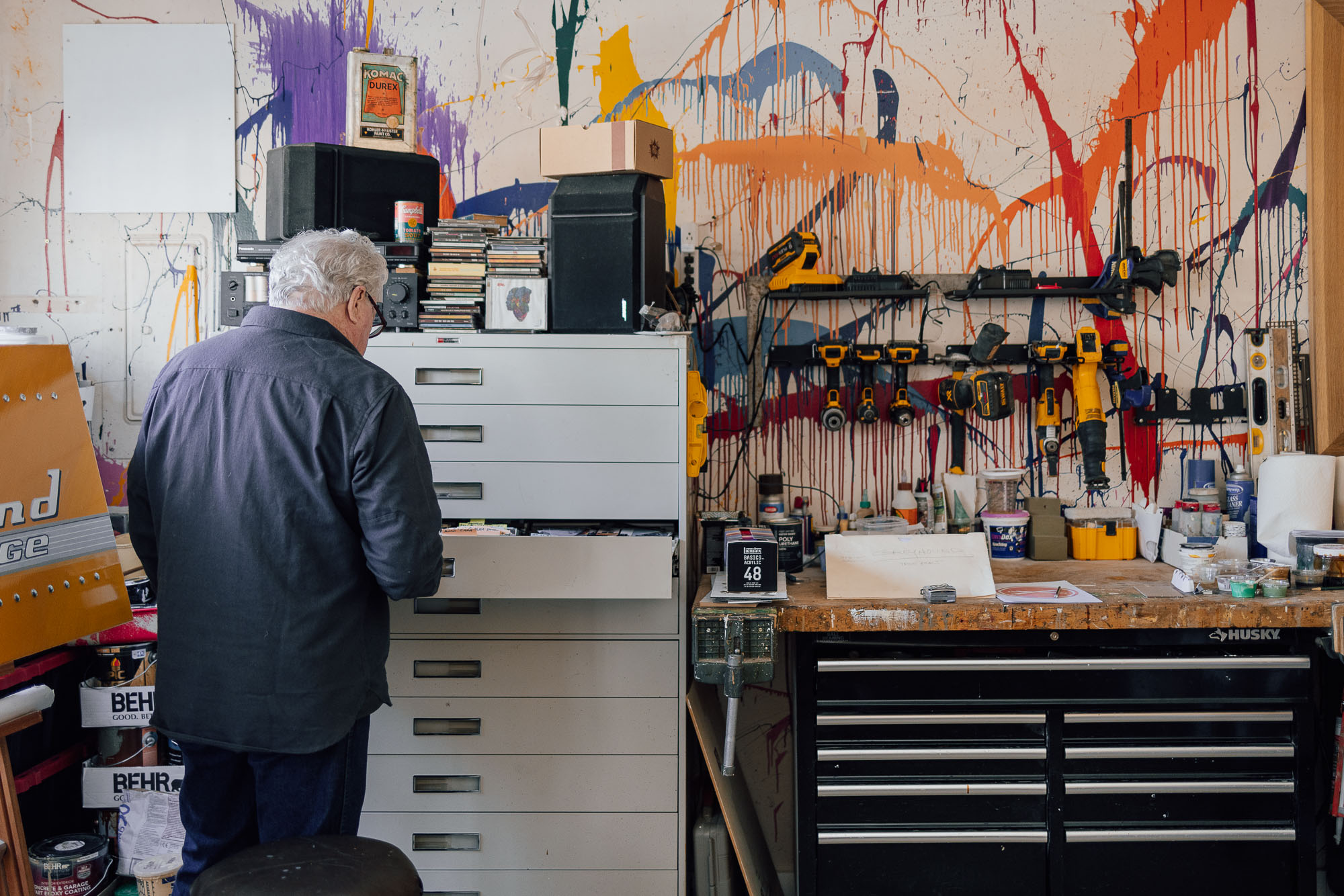
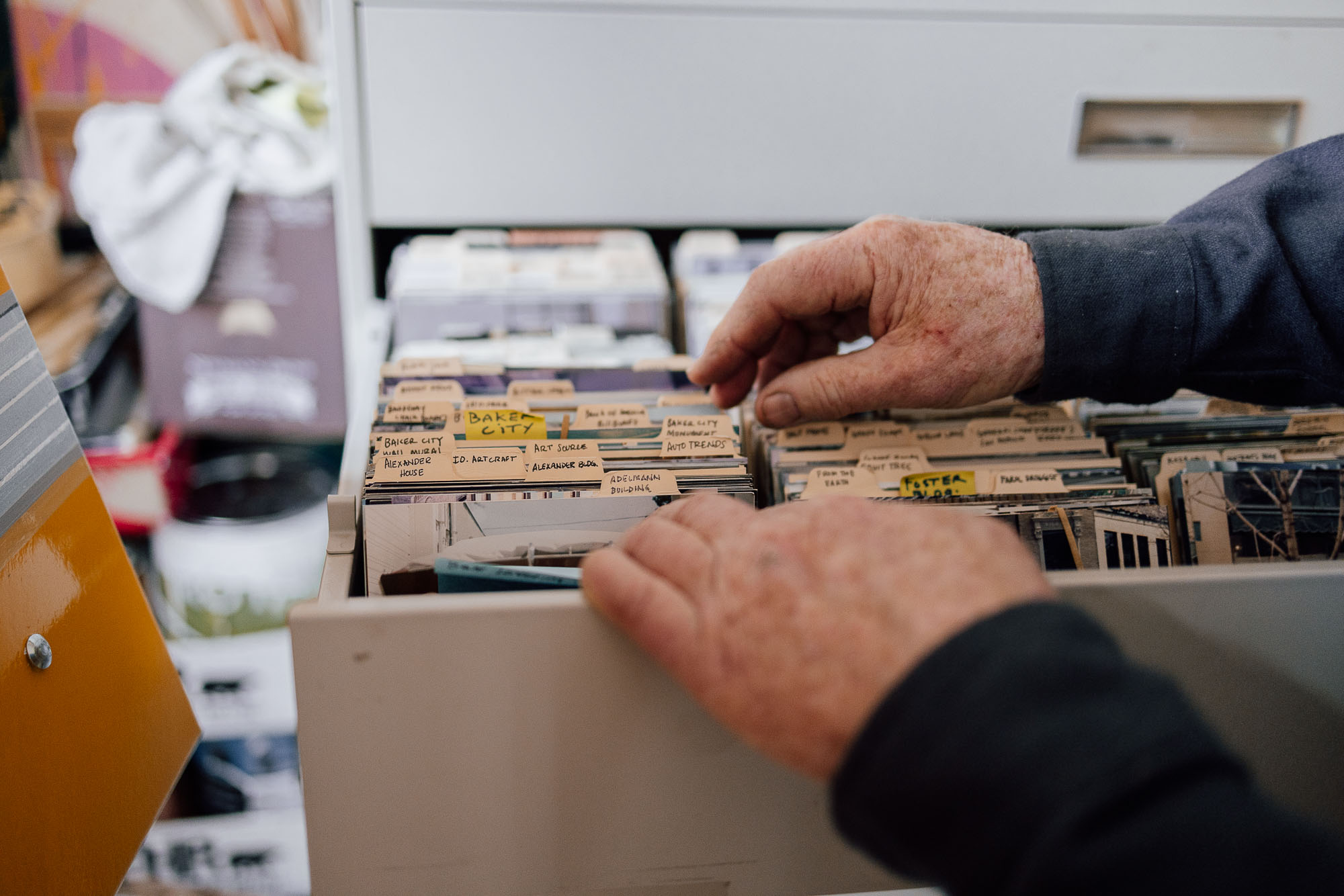
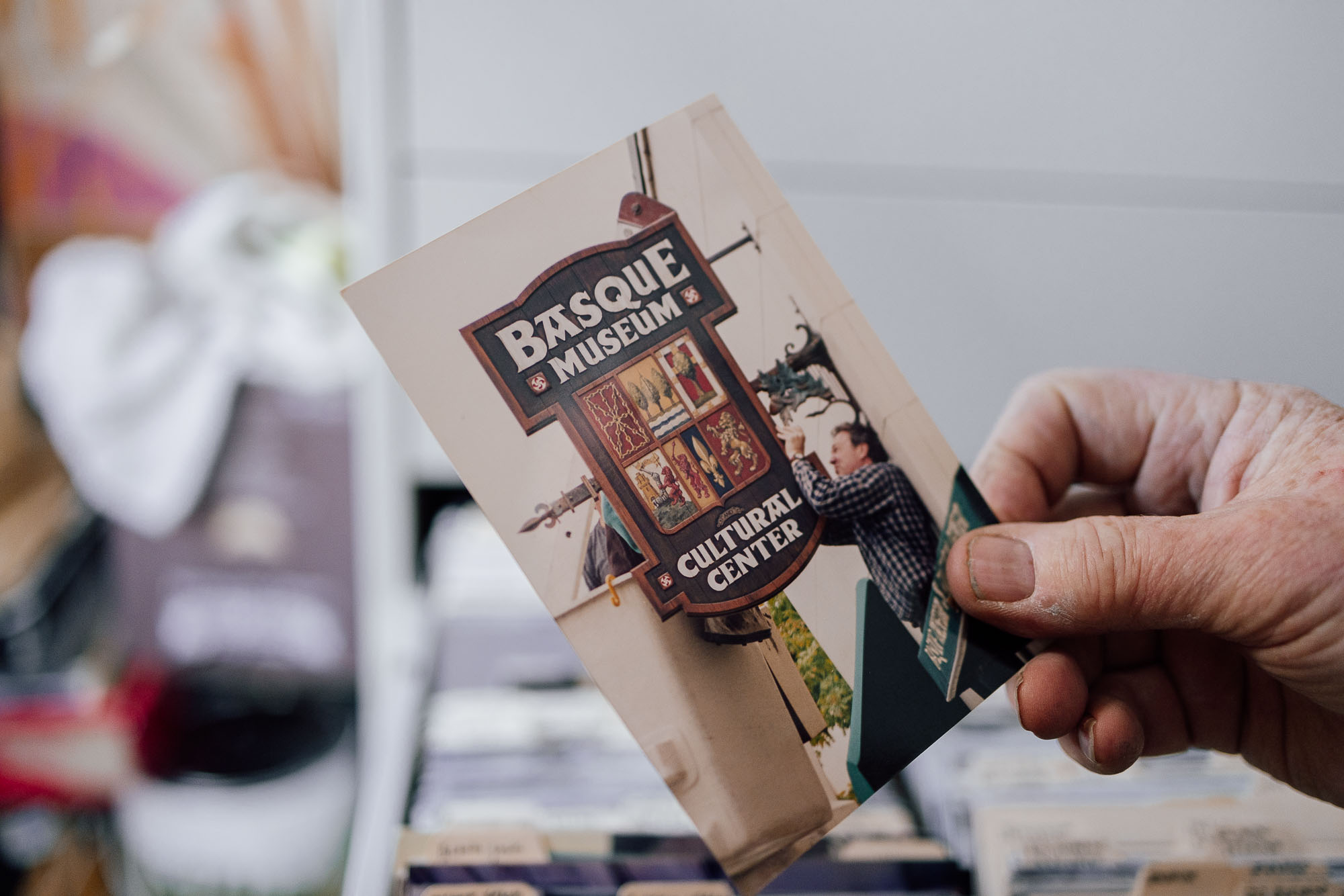
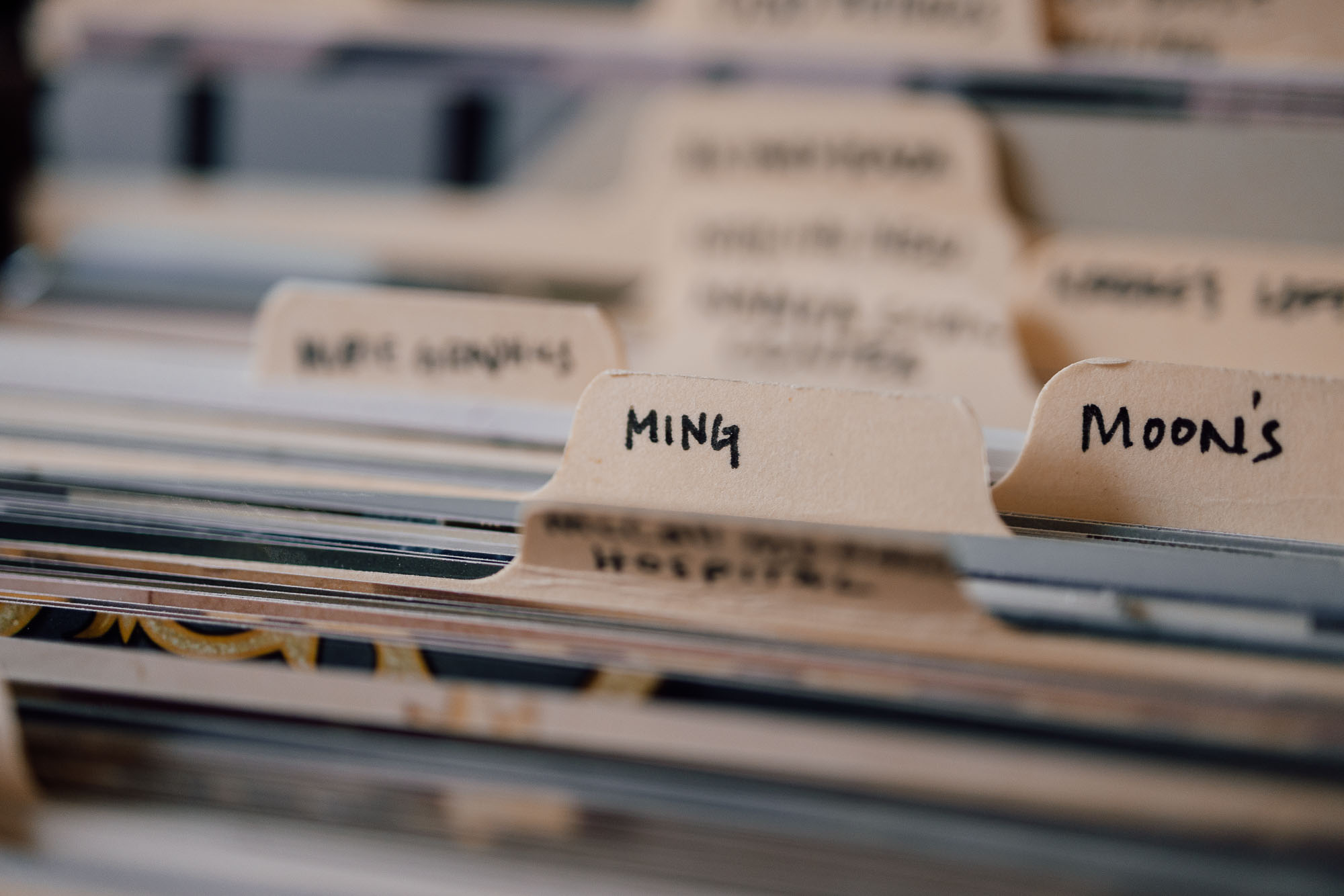 Getting out of the way is a skill in itself.
Getting out of the way is a skill in itself.
When you have confidence in who’s doing the work, it gets easier.
Any tips on hiring employees?
Hire people better than you. Hire people you want to learn from, or hire people that are eager to learn and keep encouraging. And let them make mistakes.
Oh, that’s a hard one.
Well, you can let them do it once. But just be encouraging. I know I’ve made plenty of mistakes myself. We’ve had a lot of successes, but we’ve had failures too. That’s the learning curve. 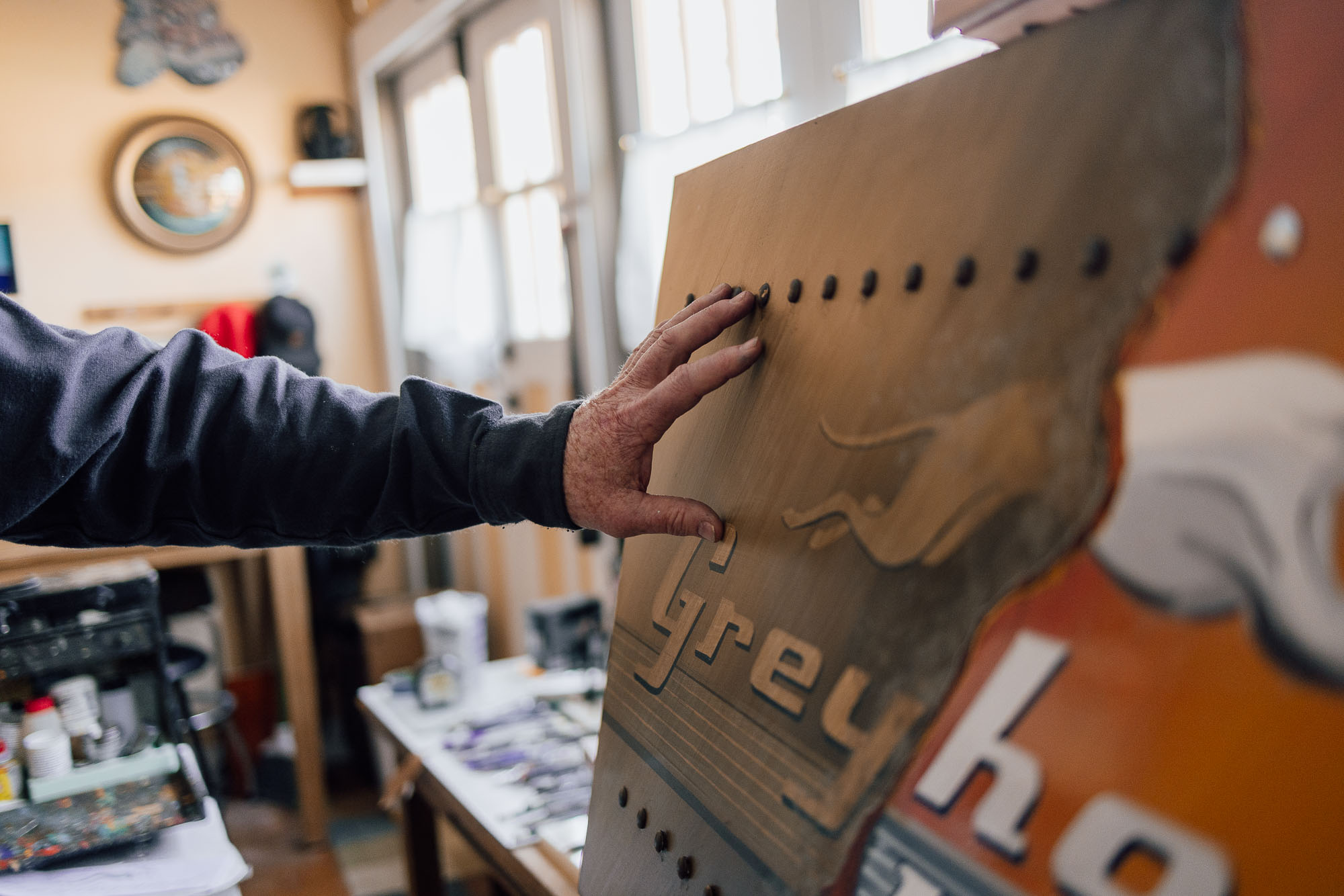
Have you been through periods of struggle, doubt, or disappointment?
If I ever slip into a zone like that, I’ll stop and I’ll clean and organize. I’ll take that time to readjust my mood, my psyche. We all go through those things. And then when you come out of it, you’ve got a clean space to work; you can build on that rhythm again. Because it doesn’t always happen, like on any project; you have the joy of getting the project, and you get like 60 percent through, then the challenges start hitting and put you up against the wall. I think that’s what makes a difference in a journeyman: where you get through it, think through it and don’t get discouraged, because you will see the end of the project.
So it’s not necessarily that cleaning and organizing will get you out of it, maybe you don’t have control of that, but at least it gives you something to do.
It takes your mind off of the problem, and gives you time to think through the problem. 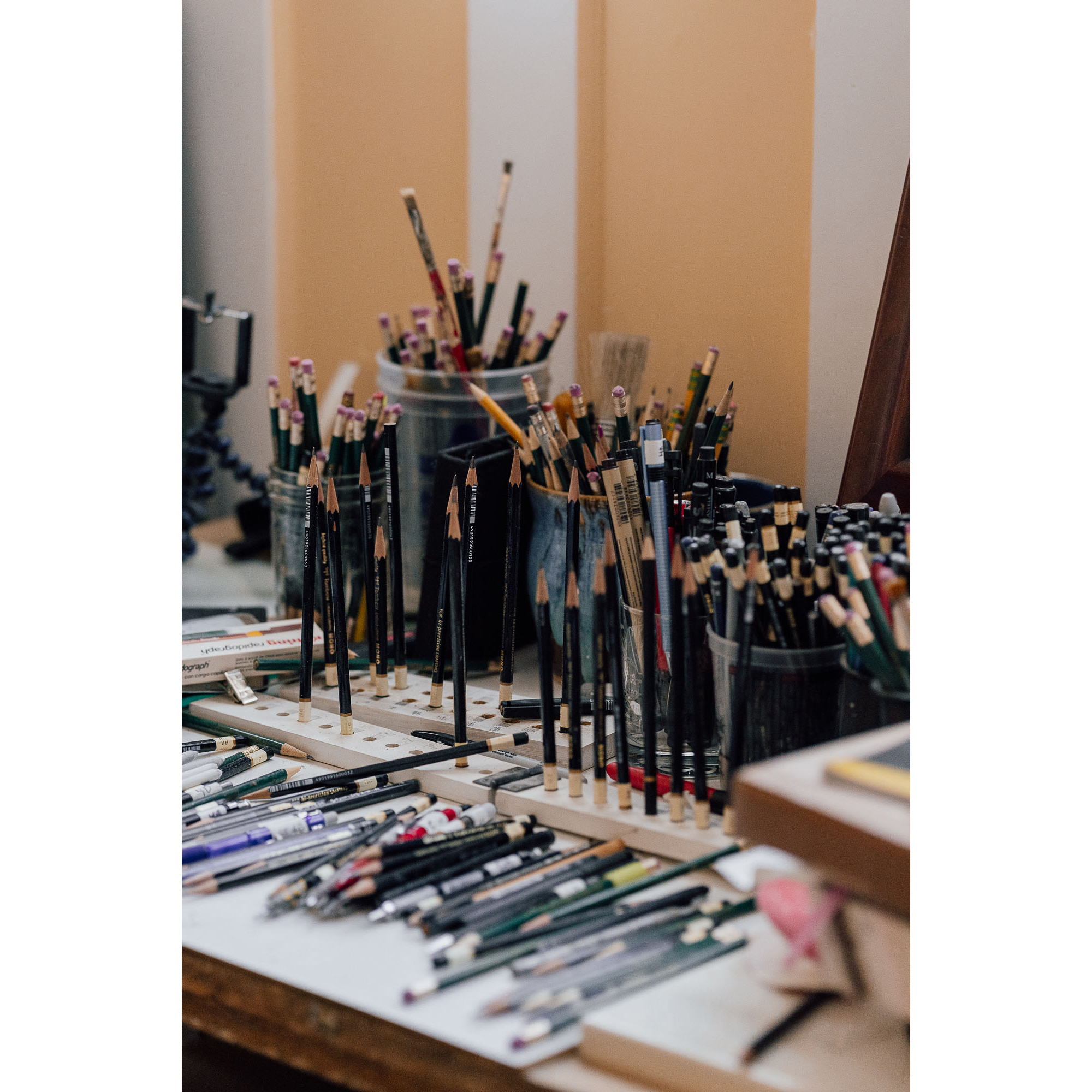
Do you think that could apply to problems in life, not just in art and work?
Oh, yeah, it does. I like to stay busy, it’s a good work ethic. I think we’ve passed it on to our kids.
What’s it like raising a family in the arts?
It’s been great. For one, they saw my wife and I go through the highs and lows of the business. And it is a business. But they saw those highs and lows, and they are still in the arts. They saw the challenges and the struggles, but they also saw the love that we have for what we do.
Having kids that are artistic, they’ll look at what I do, they’re not – they don’t hesitate to criticize it [laughter], but they’re always kind and honest, you know. Don’t take it too personally. They’re usually right.
What would you say to an artist who is just starting out?
Find your niche, do what you love doing, and just keep doing it. I got a fortune cookie one time, it said: you’ll succeed in an unusual way. Yeah, it’s good fortune.
What about strengths?
Strengths? I’m tenacious, I’m a finisher. And most of the time I’m fearless.
Does that get you into trouble?
It has. It has. We would take on projects that we probably weren’t quite ready for, but still we took them on because the client had confidence in us.
Your book is dedicated to Lucy?
We’ve been together since 1969. If you ever see us walking together, I’ll be holding her hand. She’s been a great wife and a wonderful mother.
And spellchecker? [Laughter.]
And spellchecker. She’s been a really good friend.
Wonderful. The last thing I want to circle back around to, the thing we started with: purpose. You said that being an artist for you gave you a purpose?
It’s not just a way to earn a living. It’s what I love doing. Growing up in Chicago and watching the evolution – [question] what do you do when you get out of high school? I had no means to go to college, and academically I probably wasn’t ready to do that. Most of my high school friends went into trades, because that’s what you did in the city. I was really lucky to choose the trade I did because there were still journeymen willing to share and teach and [who] wanted you to succeed as a young person. This trade has not only earned me a living, but it’s provided so much satisfaction and joy in the creativity.
You can’t ask for more.
East End
August 9, 2023
This interview has been edited and condensed for clarity.
Creators, Makers, & Doers highlights the lives and work of Boise artists and creative individuals. Selected profiles focus on individuals whose work has been supported by the Boise City Dept. of Arts & History. The views expressed in this publication are those of the individuals interviewed.
